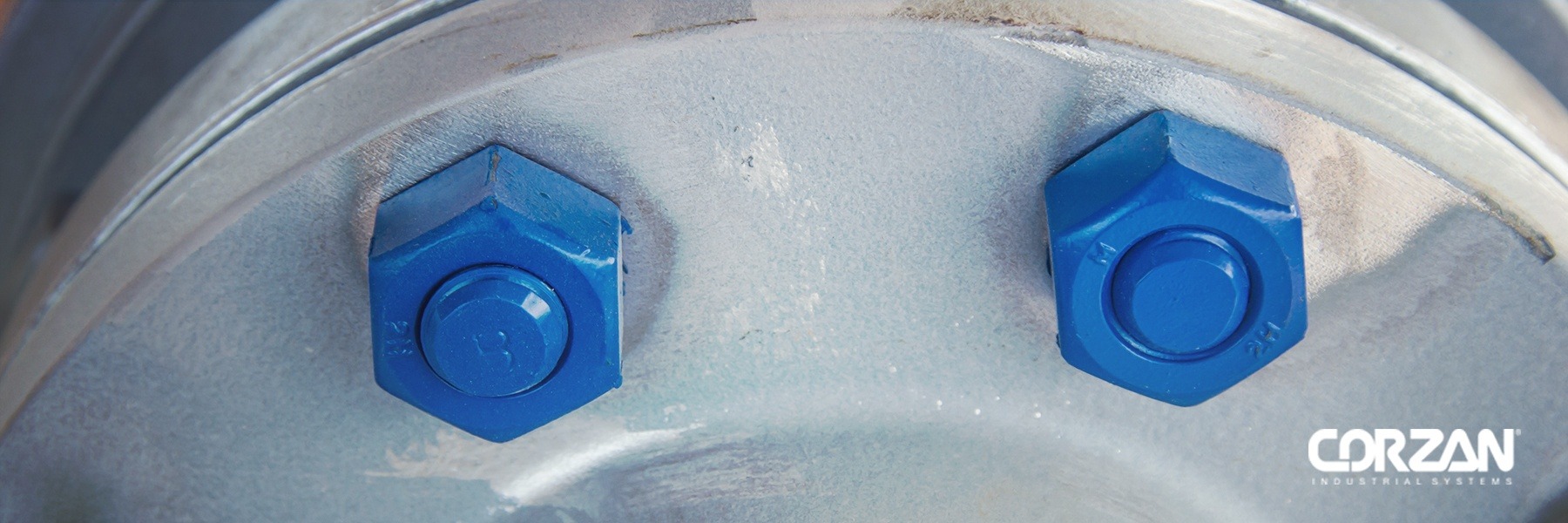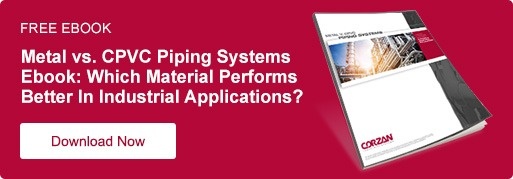Can CPVC Piping Be Used With Other Piping Materials?
As CPVC becomes increasingly specified in industrial processing applications, the conversation around how it compares to other piping materials grows. Often, we are asked:
For this post, rather than compare and contrast CPVC’s characteristics to another material, we explore the possible joining methods and specific uses CPVC may have in conjunction with other thermoplastic or metal piping materials.
How Is CPVC Joined To Other Materials?
When two different materials are involved, several types of transition fittings are available to ensure a strong connection.
Preferred Methods for Joining CPVC To Other Materials
Flanges: Flanges can easily connect a variety of pipes, pumps, valves, instrumentation, and more. And, piping of all materials can be joined using flanges, making them the most common mechanism for joining two different piping materials, especially in industrial processes. If connecting schedule 40 or schedule 80 CPVC piping to steel piping, for instance, the steel piping would be welded to a steel flange and the CPVC would be solvent welded to a CPVC flange before the two are bolted together.
Threaded adapters: With less demanding system pressures, threaded adapters can be used. When employing this type of connector, it is recommended to reduce the pressure rating of a CPVC piping system by 50 percent. Also, these connections are more vulnerable to bending stresses.
A brass transition adapter is one example of a threaded adapter. In this case, the CPVC end of the adapter is solvent cemented to the CPVC piping, while the brass end is threaded to the other material.
How Not To Join Two Different Materials
Solvent welding: When joining two pieces of CPVC, solvent welding is the preferred joining method. CPVC solvent cement loosens the top molecular layer of CPVC material. As two piping components are pressed together, the loose molecules attach to one another, fusing the two pieces together. The CPVC resin in the cement serves to fill in any material gaps that may exist, further solidifying the weld.
Other thermoplastics, such as Acrylonitrile Butadiene Styrene (ABS) and Polyvinyl Chloride (PVC), can also use solvent cements. However, each type of solvent cement is designed for that specific material, so CPVC should not be joined to another thermoplastic piping materials with this method.
Joining two different materials with solvent cement can yield poor joints, leading to decreased performance and a shorter overall lifecycle.
Plastic to metal threading: Certain types of threaded adapters are effective for joining plastics to metals, but directly threading a thermoplastic to metal is not recommended. Because metals are more rigid than plastics, metal can stretch CPVC beyond its limit during threading and strip the plastic threads.
Why Join CPVC with Metals?
Thermoplastic and metal piping materials can feel at odds when specifying a new or upgrading an existing piping system. However, specific situations may call for the two to be joined together.
As a CPVC test piece: Common chemicals used in industrial processes often corrode metal piping systems—which can decrease pressure ratings, slow flow rates, contaminate fluids and cause excessive repairs. CPVC, meanwhile, is inherently inert to most acids, bases, and salts. Rather than overhauling a metal system and replacing it entirely, plants may choose to install a test CPVC piece in between two metal components for a few months to gauge its effectiveness. At the end of the trial, the piece is removed and analyzed for signs of wear.
To address a specific corroded area: Certain points along a run of metal pipe may show increased susceptibility to corrosion, pitting and scaling. To address the isolated issue, plant managers may install a short run of CPVC pipe to utilize its corrosion resistant properties at that spot.
To see Corzan CPVC’s compatibility with more than 400 chemicals, refer to the Corzan CPVC Chemical Resistance Chart.
For a cost-effective addition: The total cost of CPVC piping systems is often lower than steel or other metals when accounting for lifespan and installation costs. When price is a major factor, but certain performance attributes must be upheld, designers often give CPVC a try in these situations.
In a CPVC system, metal may be specified to support heavy points: Because metals can support heavier loads than thermoplastics, plant managers may specify metal next to a heavy instrument or valve if the piping must support the additional weight on its own.
See How CPVC Compares to Metal Piping Systems
We have explained how a piping system can utilize both CPVC and metal piping, but there are clear differences in performance worth diving into.
In the resource article, Metal v. CPVC Piping Systems — Can CPVC outperform metal piping in industrial applications?, our team of engineering and product experts compare CPVC piping to metal in terms of temperature, pressure, and corrosion resistance, cost and safety.


